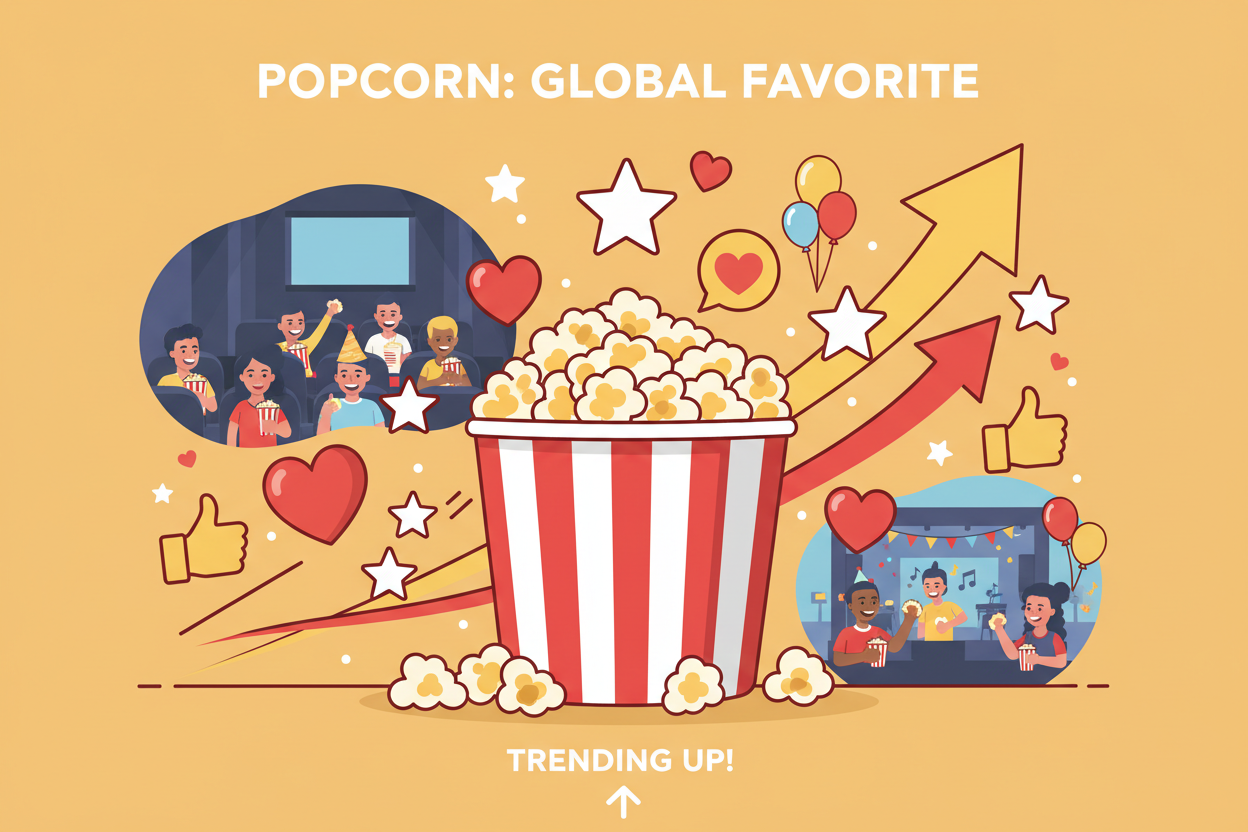The popularity of popcorn
POP… POP… POP… The sound hits you, slow at first, then like a storm, they magically transform into billows of crunchy yet soft white goodness. Next, the smell, tantalizing your noses and our taste buds. By the time your teeth crunch down on that first bite, you’re completely hooked!
#Popcorn is an irresistible treat. Try keeping a bowl to yourself during family movie night, or buying a small bucket at the movie theater. Before you know it, everyone is grabbing a handful of it and nothing is left. Popcorn is a simple, tasty treat on its own, but it also lends itself to a variety of toppings; butter, sugar, cinnamon, caramel, a sprinkle of smoked paprika, even chocolate! Popcorn provides a perfect canvas for your sweet and salty cravings.


The popcorn variety of maize was domesticated by Pre-Columbian indigenous peoples by 5000 B.C.E. It is a small and harder form of flint corn, most commonly found in white or yellow kernels. The stalks produce several years at a time, though they are smaller and yield less corn than other maize varieties. The “pop” is not limited exclusively to this type of maize, but the flake of other types is smaller by comparison. Popcorn likely arrived in to southwest
America over 2500 years ago, but was not found growing east of the Mississippi until the early 1800s due to botanical and environmental factors. Today the Midwest is famous for its “Corn Belt,” but prior to the introduction of the steel plow during the 19th century, soil conditions in that region were not suitable for growing corn. Evidence of popcorn’s first “pop” did not appear until the 1820s, when it was sold throughout the eastern United States under the names Pearl or Nonpareil.
One of the earliest recipes for popping corn came from Daniel Browne during the 1840s. His method required one to “Take a grill, a half pint, or more of Valparaiso or Pop Corn, and put in a frying-pan, slightly buttered, or rubbed with lard. Hold the pan over a fire so as constantly to stir or shake the corn within, and in a few minutes each kernel will pop, or turn inside out.” He adds that salt or sugar can be added while the popcorn is still hot. The problem with this method was that butter tended to burn before reaching a high enough temperature and lard produced popcorn that was soaked with grease. It wasn’t until the second half of the nineteenth century that an efficient method for popping corn was developed.

As popcorn grew in popularity, it began to appear in all sorts of variations. Louis Ruckheim came up with the first version of Cracker Jack, made from popcorn, peanuts and molasses, during the late 1890s. There are several different stories surrounding how the snack first got its name, but it undoubtedly derived from a popular slang term during the era, meaning “excellent” or “first rate.”
Popcorn’s mass appeal was brought to new heights thanks to movie theaters. Surprisingly, theater owners were not on board with popcorn sales in the beginning. They thought it might create an unnecessary nuisance in addition to requiring expensive changes, like installing outside vents to rid the building of smoky popcorn odors and the trend spread quickly.
Today Popcorn sales are up 169 per cent in the last five years reaching an estimated £129M
Bags of popped corn with gourmet flavorings have replaced crisps on the shelves of trendy lunch chains such as Pret a Manger and Costa. Supermarkets and other brands are promoting them as healthy and even skinny.
Popcorn is the star growth performer in the crisps, savory snacks and nut market, more than doubling in size from 2010-15.
Popcorn’s health credentials and flavor innovations have helped boost the segment, along with its popularity among younger consumers, who are more likely to snack'
Statistics show over one third (35per cent) of people have eaten popcorn in a three month period, rising to half (49per cent) of those aged 16-34.
Can you imagine walking into a movie theater today without the scent of popcorn welcoming you inside? I sure cannot!!!


